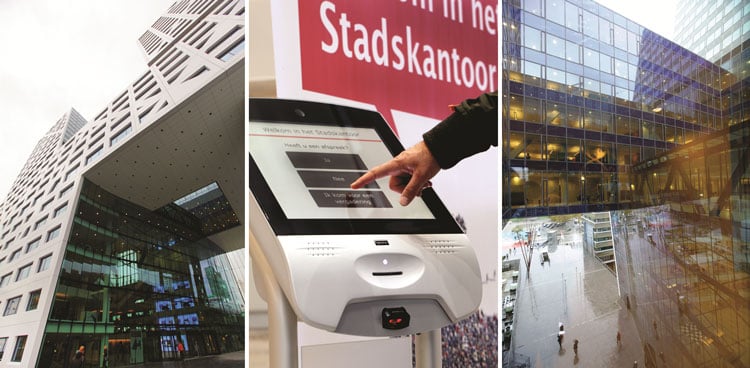 Around the world, municipal agencies are trying to manage high service expectations from constituents. They are striving to do more – for more – with limited resources. And they are taking steps to ensure their efforts are meaningful and transparent.
Around the world, municipal agencies are trying to manage high service expectations from constituents. They are striving to do more – for more – with limited resources. And they are taking steps to ensure their efforts are meaningful and transparent.
Consolidation may be one of the most reliable ways to achieve those goals. This lean approach to resource utilization raises operational efficiency and agility by merging and reducing the total number of touch points a citizen must engage in the customer journey. It begins with understanding how citizens need and want to consume services. With that data, agencies can build flexibility into locations, teams, and service resources. The entity becomes a nimble ‘one stop shop’ capable of managing all kinds of licensing and public tasks for a broad citizen audience.
This approach enables people to spend less time moving through individual offices to accomplish a list of responsibilities. It communicates that the organization values their time. Staff members are more productive because the environment and operations are set up to accommodate a higher volume of citizens, and those citizens are equipped to perform some of their tasks without assistance.
Consolidation Lowers Costs and Improves the Citizen Experience
Creating ‘one stop’ service centers based on data about volume and how citizens consume services allows agencies to share resources and equip staff to provide a wider set of services.
- Reduces footprint, traffic, parking requirements
- Creates a better experience by enabling citizens to manage multiple tasks in one visit
- Aids in cross-training and human resource planning
- Informs capacity planning to meet volume and resource need, and to speed the citizen journey
- Handles a greater number of appointments without additional burden on resources or staff
A Consolidation Success Story
Utrecht City Hall was operating in 65,000 sq./m (699,654 sq./ft) of space, which was fragmented into 30 locations and 11 municipal services. The structure required citizens to move from office to office, and line-to-line. It was inefficient, it created frustration and delays, and it had made the environment unpleasant environment for citizens and staff alike.
Qmatic delivered a system designed to streamline and simplify the visits. Gathering and storing citizen data in a secure centralized database, rather than segmenting it by municipality or office created a high degree of flexibility. Enabling staff to handle multiple related transactions at once, improved the citizen experience and operational efficiency.
Thanks to these changes, Utrecht City today serves approximately 2,000 citizens per day. It is the largest one-stop-shop in the Netherlands, and an example for other municipal organizations around the world.
Operational resources and space are better utilized. It may be the best way to maximize public dollars and build sustainable improvements. Find out what kind of impact you could realize through a consolidation effort that maximizes efficiency by reducing operations.